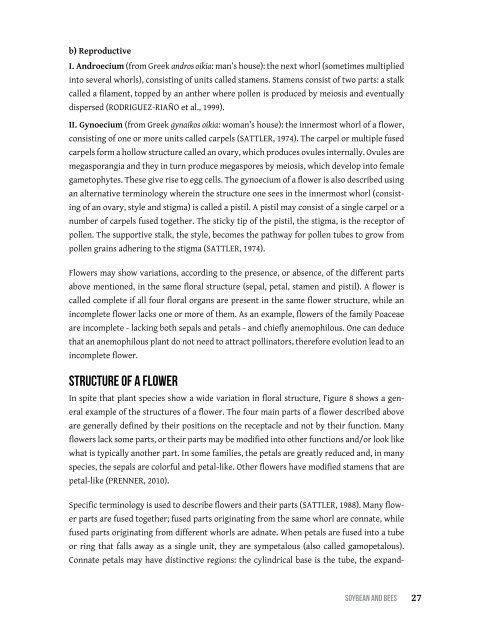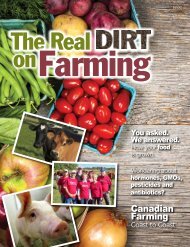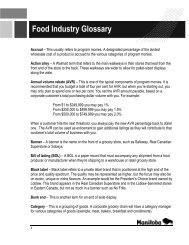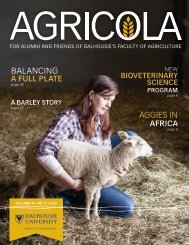SOYBEAN and BEES
BFhV4z
BFhV4z
Create successful ePaper yourself
Turn your PDF publications into a flip-book with our unique Google optimized e-Paper software.
) Reproductive<br />
I. Androecium (from Greek <strong>and</strong>ros oikia: man’s house): the next whorl (sometimes multiplied<br />
into several whorls), consisting of units called stamens. Stamens consist of two parts: a stalk<br />
called a filament, topped by an anther where pollen is produced by meiosis <strong>and</strong> eventually<br />
dispersed (Rodriguez-Riaño et al., 1999).<br />
II. Gynoecium (from Greek gynaikos oikia: woman’s house): the innermost whorl of a flower,<br />
consisting of one or more units called carpels (Sattler, 1974). The carpel or multiple fused<br />
carpels form a hollow structure called an ovary, which produces ovules internally. Ovules are<br />
megasporangia <strong>and</strong> they in turn produce megaspores by meiosis, which develop into female<br />
gametophytes. These give rise to egg cells. The gynoecium of a flower is also described using<br />
an alternative terminology wherein the structure one sees in the innermost whorl (consisting<br />
of an ovary, style <strong>and</strong> stigma) is called a pistil. A pistil may consist of a single carpel or a<br />
number of carpels fused together. The sticky tip of the pistil, the stigma, is the receptor of<br />
pollen. The supportive stalk, the style, becomes the pathway for pollen tubes to grow from<br />
pollen grains adhering to the stigma (Sattler, 1974).<br />
Flowers may show variations, according to the presence, or absence, of the different parts<br />
above mentioned, in the same floral structure (sepal, petal, stamen <strong>and</strong> pistil). A flower is<br />
called complete if all four floral organs are present in the same flower structure, while an<br />
incomplete flower lacks one or more of them. As an example, flowers of the family Poaceae<br />
are incomplete - lacking both sepals <strong>and</strong> petals - <strong>and</strong> chiefly anemophilous. One can deduce<br />
that an anemophilous plant do not need to attract pollinators, therefore evolution lead to an<br />
incomplete flower.<br />
Structure of a flower<br />
In spite that plant species show a wide variation in floral structure, Figure 8 shows a general<br />
example of the structures of a flower. The four main parts of a flower described above<br />
are generally defined by their positions on the receptacle <strong>and</strong> not by their function. Many<br />
flowers lack some parts, or their parts may be modified into other functions <strong>and</strong>/or look like<br />
what is typically another part. In some families, the petals are greatly reduced <strong>and</strong>, in many<br />
species, the sepals are colorful <strong>and</strong> petal-like. Other flowers have modified stamens that are<br />
petal-like (Prenner, 2010).<br />
Specific terminology is used to describe flowers <strong>and</strong> their parts (Sattler, 1988). Many flower<br />
parts are fused together; fused parts originating from the same whorl are connate, while<br />
fused parts originating from different whorls are adnate. When petals are fused into a tube<br />
or ring that falls away as a single unit, they are sympetalous (also called gamopetalous).<br />
Connate petals may have distinctive regions: the cylindrical base is the tube, the exp<strong>and</strong>-<br />
SoybeAn <strong>and</strong> bees<br />
27






